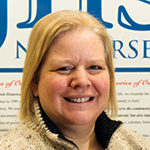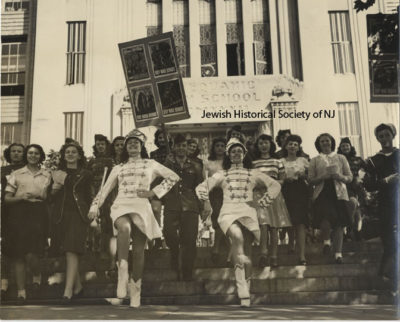
In May we celebrate Jewish American Heritage Month. In Greater MetroWest there’s a lot of heritage to celebrate!
Here is a small sample of the interesting material the Jewish Historical Society of Greater MetroWest holds in its archive that are currently on display for the month. It was challenging to determine which items to select to represent the great achievements and cultural highlights within the Jewish community of Greater MetroWest. We ultimately narrowed down our choices to these topics: The YM-YWHA on High Street in Newark and the Y in Union County, examples of military service in WWII, and Newark’s Beth Israel Hospital.
“The Y”
Of the institutions established to help Jewish immigrants become Americanized, none exceeded the YM-YWHA. The “Y” was part “communal schoolhouse, patriotic clearing house, and civic home.”
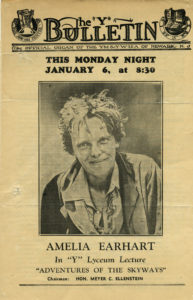 The “Y on High” in Newark’s campaign slogan was: “The next best place to home for your son and daughter.” Opened in 1924, the Y on High hosted programs and opened a gym and a pool. Members could exercise, participate in dances and other activities, and perform in the Y’s orchestra or “Bits of Hits” theater group. As the Jewish population in the Third Ward neighborhood adjacent to High Street Y shifted over the next two decades to the Clinton Hill and Weequahic neighborhoods, the High Street Y facility was closed, with the sale of the building in 1954. After a vigorous fundraising campaign, the Y reopened its doors on Chancellor Ave. in 1959. Then, as many in the community moved to the suburbs, the Y opened its new home on Northfield Ave. in West Orange. The Y moved where the people needed it to be in order to meet the needs of the community.
The “Y on High” in Newark’s campaign slogan was: “The next best place to home for your son and daughter.” Opened in 1924, the Y on High hosted programs and opened a gym and a pool. Members could exercise, participate in dances and other activities, and perform in the Y’s orchestra or “Bits of Hits” theater group. As the Jewish population in the Third Ward neighborhood adjacent to High Street Y shifted over the next two decades to the Clinton Hill and Weequahic neighborhoods, the High Street Y facility was closed, with the sale of the building in 1954. After a vigorous fundraising campaign, the Y reopened its doors on Chancellor Ave. in 1959. Then, as many in the community moved to the suburbs, the Y opened its new home on Northfield Ave. in West Orange. The Y moved where the people needed it to be in order to meet the needs of the community.
The Y of Union County’s history reaches back to a time when first-generation Jewish families formed societies focusing on building institutions that would help them assimilate as American citizens. Formed in 1930, the leaders of The Union Y sought to find ways to survive during the economic crisis of the Great Depression and did through a series of adult education programs called Lyceum Courses. The current Union Y, opened in 1966, continues to thrive and serve the community.
“The Beth”
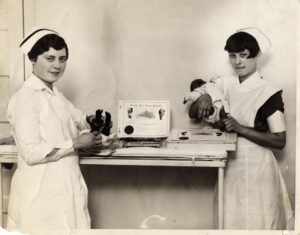 Founded in 1901, the Beth was the result of a merger between two groups: the Hebrew Hospital and Dispensary Association, founded in 1900, that conducted a clinic on Kinney and Charlton Streets and the Daughters of Israel Hospital Association, which was granted a charter for Beth Israel Hospital. On August 31, 1902, the hospital containing 22 beds was officially opened to the public. Support came from many of the area’s Jewish societies, especially those who offered health, death, and mutual benefits to its members. The idea of a Jewish hospital offering services to the poor, providing kosher food, having Yiddish-speaking staff, and making it possible for a Jewish doctor to practice medicine in a hospital were some of the compelling reasons for receiving donations from the community.
Founded in 1901, the Beth was the result of a merger between two groups: the Hebrew Hospital and Dispensary Association, founded in 1900, that conducted a clinic on Kinney and Charlton Streets and the Daughters of Israel Hospital Association, which was granted a charter for Beth Israel Hospital. On August 31, 1902, the hospital containing 22 beds was officially opened to the public. Support came from many of the area’s Jewish societies, especially those who offered health, death, and mutual benefits to its members. The idea of a Jewish hospital offering services to the poor, providing kosher food, having Yiddish-speaking staff, and making it possible for a Jewish doctor to practice medicine in a hospital were some of the compelling reasons for receiving donations from the community.
The Beth is attributed to the work of many dedicated men and women, including Dr. Max Danzis and Dr. Victor Parsonnet who played a key role in the hospital’s early days. Continuing the Parsonnet family tradition were Dr. Eugene Parsonnet, former president of the medical staff and developer of New Jersey’s first hospital residency program, and Dr. Aaron Parsonnet, who wrote a landmark book on electrocardiology in the 1920s. You can read more about The Beth’s history here.
The growth of the Beth grew to what we know it as today — Beth Israel Medical Center — became affiliated with the St. Barnabas Health Care System, making it the largest integrated health-care delivery system in New Jersey.
Greater MetroWest and WWII
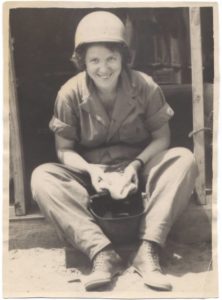 U.S. involvement in the Second World War was quickly followed by a massive mobilization effort. With millions of men and women serving overseas in the nation’s armed forces, most of those who remained at home dedicated themselves to supporting the war effort through whatever means were available to them.
U.S. involvement in the Second World War was quickly followed by a massive mobilization effort. With millions of men and women serving overseas in the nation’s armed forces, most of those who remained at home dedicated themselves to supporting the war effort through whatever means were available to them.
Students planted and took care of Victory Gardens and saved money to purchase War Bonds. They also helped their families save ration stamps by not wasting food and collected materials used for production in defense plants. War Ration Books, which are in the archive at the JHS, advised citizens to salvage tin cans and waste fats as they were needed to make munitions. While fighting the war was united among all Americans, the Jews of Greater MetroWest were no exception. We honor those who served abroad as well as those who worked tirelessly on the home front.
This month, as always, the Jewish Historical Society of Greater MetroWest NJ is proud to document and pay tribute to the generations of Jewish Americans who have helped form the fabric of American history, culture, and society.

